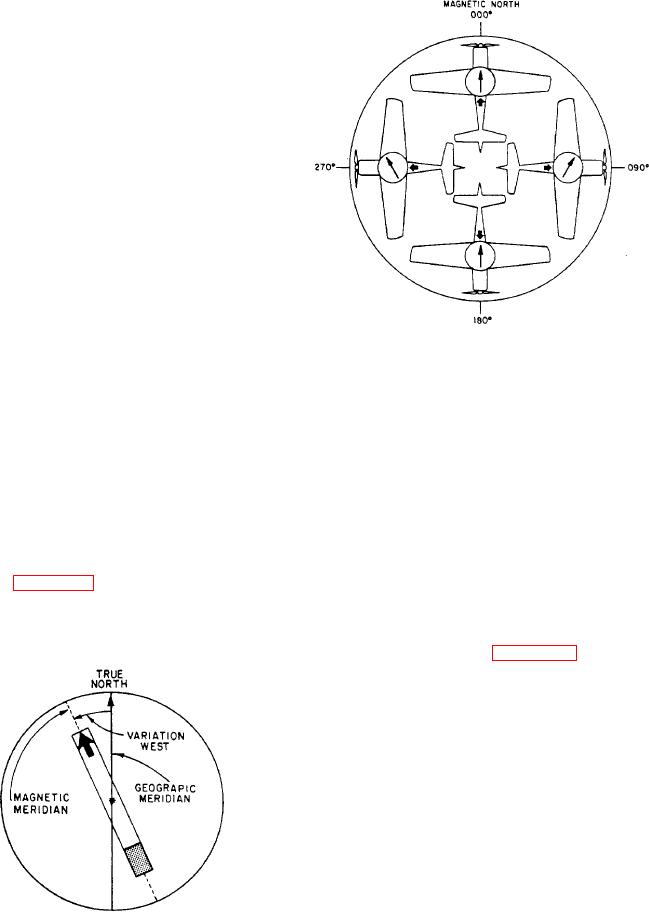
To convert minutes into decimals of degrees,
or to convert seconds into decimals of minutes,
divide by 6. Thus: 1530 = 15.5, and 153024
1530.4.
VARIATION
As stated under the definitions of poles, the
earth's true (geographic) poles and its magnetic
poles are not at the same locations. Also, the
location of the magnetic poles changes slightly
over the years. In 1960, the north magnetic pole
was at latitude 74.9N and longitude 101.0W.
The southern pole was at latitude 67.1S and
longitude 142.7E. Thus, a given line will have
a different direction to the true North Pole than
to the magnetic North Pole. In addition, lines of
magnetic force are not generally straight lines
because of irregular iron deposits near the earth's
surface. Since a compass needle aligns to the lines
of force at its location, it may not point to true
Figure 7-9.-Deviation changes with heading.
or magnetic north. The locations on the earth
where the compass does point to true north, when
connected together, form an irregular line. This
DEVIATION
is the agonic line. At other locations, the
angle between the direction of true north and the
Deviation is the error in a magnetic compass
direction of the earth's magnetic field is the
caused by nearby magnetic influences. These
locations variation. The earth's magnetic field
influences may relate to magnetic material in the
direction may not be the same as the direction of
structure of the aircraft and to electrical
the magnetic poles. This same angle is also often
(electronic) circuits. These magnetic forces deflect
called the angle of declination. You label varia-
a compass needle from its normal alignment with
tion (or declination) east or west as the magnetic
the earth's magnetic field. You express the
field direction is east or west, respectively, of true
amounts of such deflections in degrees. The
north. (See figures 7-7 and 7-8. ) Lines connecting
deflection will be east or west as the compass
locations having the same variation are isogonic
points east or west, respectively, of the earth's
lines.
magnetic lines of force. Deviation varies with the
heading of the aircraft. Figure 7-9 shows one
reason for this deviation.
For example, suppose that you represent the
net result of all magnetic forces inherent in an
aircraft by an arrowhead in the aircraft's
longitudinal axis and aft of the compass. If the
aircraft is heading toward magnetic north, the
magnetic forces (arrowhead) attract the south-
seeking end of the compass needle. However, they
don't change the needle's direction because the
inherent magnetism has the same polarity as the
earth's field. Now, suppose that the aircraft takes
an east magnetic heading. The aircraft's magnetic
forces now repel the north end of the compass
needle and attract the south end, causing easterly
deviation. The figure also shows that the
deviation when heading south is zero and when
heading west is westerly. You can reduce deviation
Figure 7-8.-Westerly magnetic variation.

